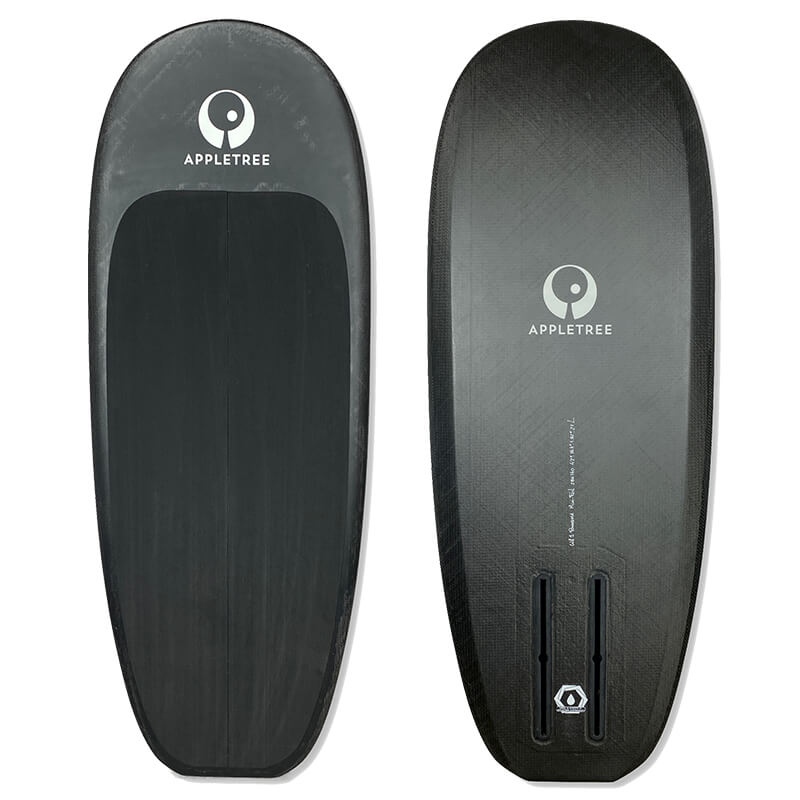When you purchase gear through links on our site, we may earn a small commission. Here’s why you can trust our tests and our affiliate partner.

Dutch masters Appletree forge composite art in their bespoke factory in Portugal, and have branched out from kite surfboards into foilsports in a big way, be it wing, kite or wave propelled. The 4’2 Mini foil tested sits in the middle of the range and comes in at 127cm, a size that we’re very familiar with industry-wide as a benchmark freeride pocket board. It weighs in at a minimal 2.2kg, and Appletree’s proprietary closed cell foam means it’s extremely strong and waterproof if you do manage to damage the tough carbon shell.
Steering well away from the ultra low volume twintip style foilboards is a good move from Appletree, and there’s enough volume retained in the fairly diminutive outline to extend the low wind application and provide a comfortable margin for variable conditions on a long downwinder for example. From a shape perspective, the depth of the board is relatively consistent along the board’s length; a generous kick of rocker in the nose feeds into the top sheet and helps rescue heavy touchdowns, and slides well through a wobbly water surface to take off, which it does extremely quickly. The outline is a subtle front-biased oval shape with more taper into the tail and a more full rounded nose shape, pushing the bulk of the volume in the board to the front. The gently rounded rail shape makes the board comfortable to handle in the land and on water; the underside has some bevels running all the way back fading into the tail, promoting that early planing, tracking and good forward speed generation. The Futures foil box is quite long and sensibly placed to accommodate a large range of foils from different brands. Occasionally you’ll pick up a board, and just feel it’s proportionally correct for task, which is very much the case here.
The deck pad has obviously been under some serious consideration and is very well chosen for freeride kite foiling. Its smooth texture gives enough grip to feel secure, but also allows you the freedom to slide your feet around, keeping a connection with the board without having to lift your bodyweight excessively and risk losing control of the foil. This slightly thinner pad also avoids the cramp you’ll sometimes experience with a softer or deeper EVA top. Footstrap inserts are installed for self-tapping fixings, allowing you to configure a traditional three-strapped Y-shaped setup as well as a two-straps down-the-centerline option.
What’s most noticeable from the combination of stiffness from the full carbon board and excellent tactile connection you get from the EVA deckpad, is how much feedback and control you gain. Every nuance from the foil is translated up to your feet, letting you know exactly what is going on below the water. You’ll find yourself rescuing situations around your maneuvers that maybe previously you would have been numb to and unaware of. For those that like to get aerial on the foils, the board is more than robust enough to cope with some big landings without having to worry.
Slightly out of the kite remit, we found the Mini worked fantastically for tow foiling, and will be the most minimal board you will pump with, translating all that hard-earned effort into forward movement.
If you’re looking for a lightweight but also bombproof kite foilboard with perfect proportions both aesthetically and physically, the Mini Foil is going to do a terrific job for the aspiring freeride foiler, and will most likely last a lifetime. Pairing it with a high-modulus carbon mast gave a huge amount of clarity and feedback from the foil which to be frank, we are yet to experience on another system.
